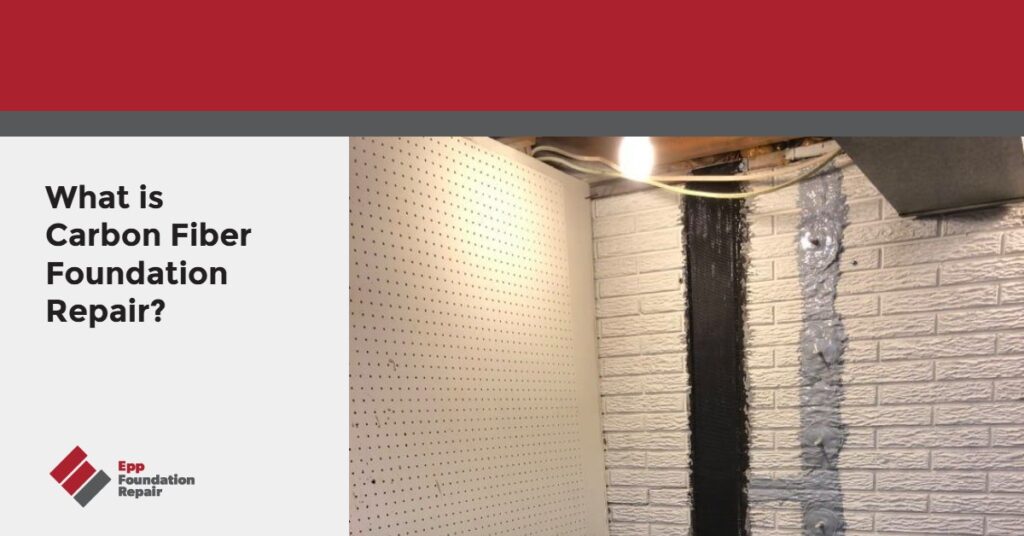If you’re looking for information about carbon fiber foundation repair, this article has what you need. We’re going to talk about carbon fiber straps, how carbon fiber foundation repair is performed, signs your house might need carbon fiber foundation repair, and more.
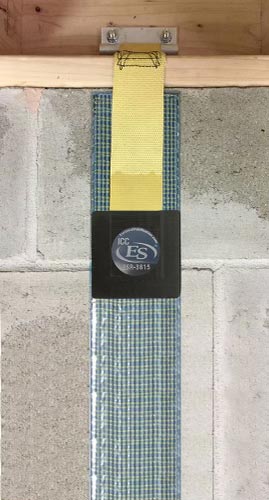
What Are Carbon Fiber Straps?
Carbon fiber straps are used to stabilize and strengthen a bowed and/or cracked foundation wall. The carbon fiber straps are secured to the foundation wall using epoxy, and once the repair is complete, they can be painted over so that they’re virtually invisible.
Do You Need Carbon Fiber Straps?
If your foundation wall is bowed inward and/or cracked, you may need carbon fiber straps to stabilize it. The only way to know for sure is to contact an experienced foundation repair contractor in your area and ask for an evaluation.
What is Carbon Fiber Foundation Repair?
The Benefits of Carbon Fiber Foundation Repair
- Carbon fiber is very strong – As we mentioned above, carbon fiber is used to build commercial aircraft. That makes it great for stabilizing and reinforcing foundation walls to prevent further inward movement.
- No maintenance is needed once the carbon fiber straps are in place – Once the repair is complete, you don’t need to worry about it.
- Carbon fiber straps lie flat on the wall – Unlike steel I-beams, carbon fiber straps don’t take up any space.
- You can paint over the straps – Are you planning on finishing your basement? No problem. You can paint carbon fiber straps, install drywall or wallpaper over them, etc.
- Quick installation – Most carbon fiber foundation repair jobs can be completed in one day.
- Less expensive than steel I-beams
- No excavation required
- Installation from inside only – There’s no need to dig up your yard.
- Minimal noise and dust
- Minimally invasive – There’s no need to drill holes into the foundation wall.
Can Carbon Fiber Repair Be Used On All Bowed Or Cracked Walls?
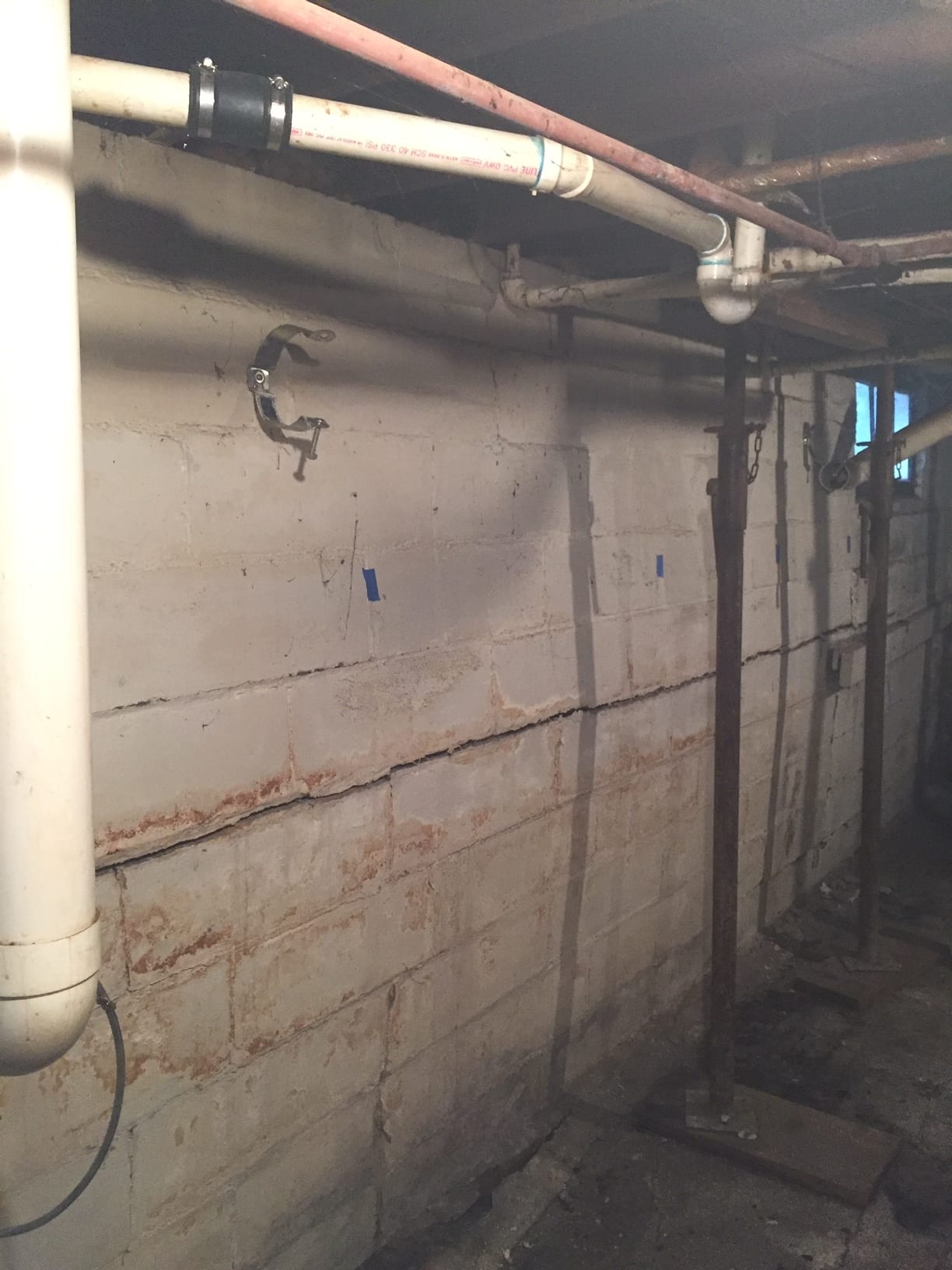
Signs Your Home Might Need Carbon Fiber Wall Repair
How Much Does Carbon Fiber Repair Cost?
- Where you live
- The size of the wall that needs stabilization – This will determine the number of carbon fiber straps necessary to strengthen the wall and stop the bowing.
Do Carbon Fiber Wall Straps Work?
Carbon fiber wall straps have become a popular solution for repairing and stabilizing bowed, cracked foundation walls. These straps are incredibly strong, lightweight, and have a tensile strength that surpasses that of steel.
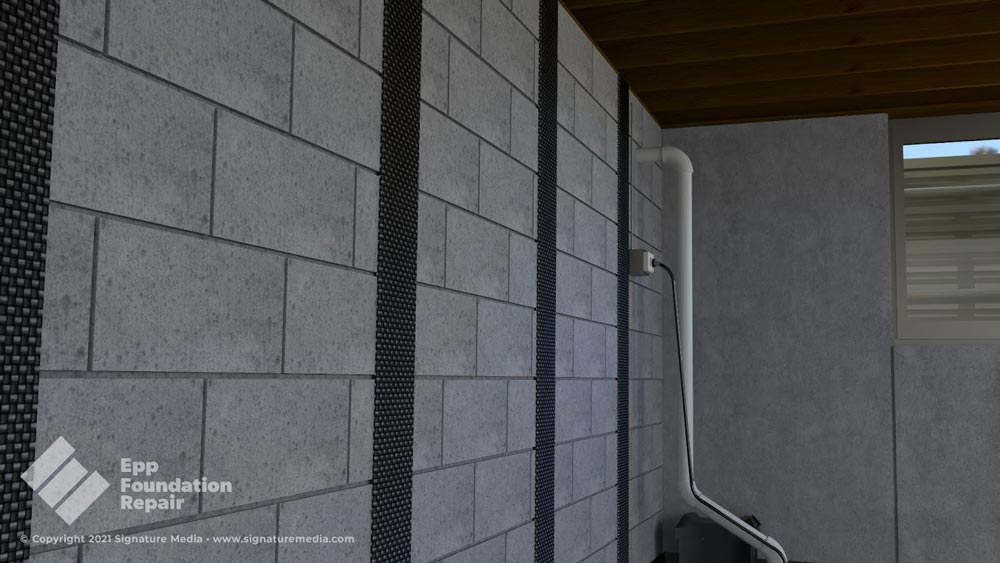
One of the main advantages of using carbon fiber wall straps for foundation repair is their ability to withstand high levels of tension. When applied correctly, they can effectively redistribute the weight of the foundation and prevent further wall movement from happening. In addition, carbon fiber wall straps are highly resistant to corrosion, making them a long-lasting solution for foundation repair.
It is important to note, however, that carbon fiber wall straps may not be suitable for all types of foundation damage. In cases where the foundation has significant structural damage or has shifted significantly, other solutions may be necessary.
Carbon Fiber Wall Repair Process
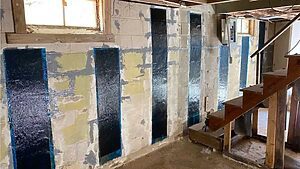
The installation process of carbon fiber wall straps is relatively simple and non-invasive. Small holes are drilled into the foundation wall, and the straps are anchored using industrial-strength epoxy. The straps are then secured to the top and bottom of the wall, creating a strong and stable support system.
DIY Carbon Fiber Wall Repair or Hire a Professional?
Installing carbon fiber wall straps to repair a bowed and/or cracked foundation wall is a highly specialized procedure that should only be carried out by professional foundation repair contractors. Carbon fiber wall straps are an advanced and effective solution for repairing such damage, but their proper installation requires extensive knowledge and experience in foundation repair.
How To Prevent Problems With Your Foundation Walls
- Install a drain tile system – When it comes to controlling groundwater around a foundation, nothing beats a drain tile system. For information about how they work, see, How Does A Drain Tile System Work?
- Clean your gutters regularly – If your gutters are clogged, it will cause water to flow over the side of the house and into the soil around the foundation.
- Install downspout extensions – These will carry water away from the foundation before releasing it.
- Install an underground downspout, and pop-up emitter – Water from the gutters will flow into the underground downspout and toward the pop-up emitter situated around 10 feet from the foundation. When the pop-up emitter is full, it will pop up and eject the water away from the foundation.
- Keep vegetation – flowers, shrubs, trees, etc. – away from the foundation – You don’t want a reason to add water to the soil around the foundation.

